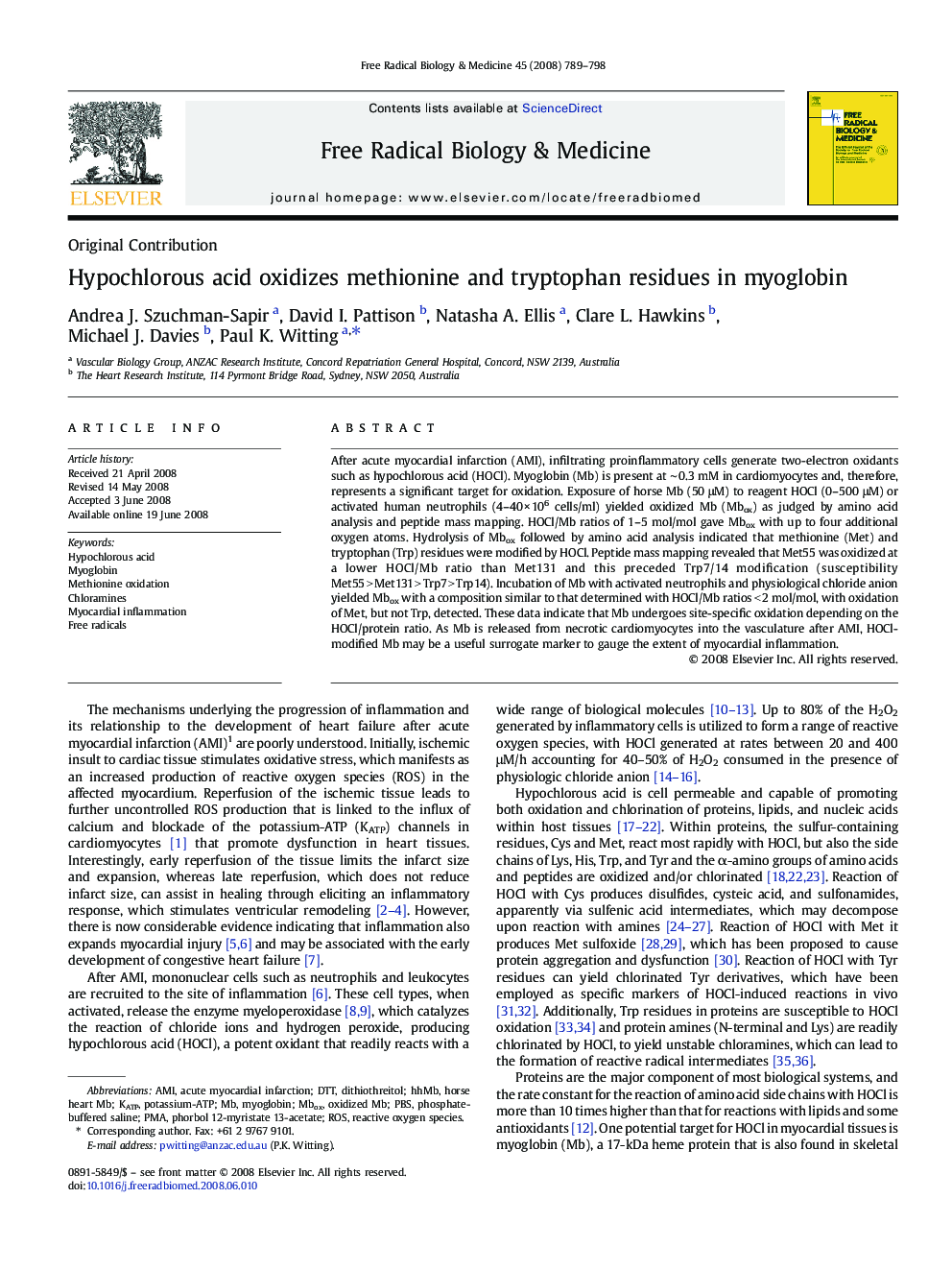| کد مقاله | کد نشریه | سال انتشار | مقاله انگلیسی | نسخه تمام متن |
|---|---|---|---|---|
| 1910676 | 1046782 | 2008 | 10 صفحه PDF | دانلود رایگان |

After acute myocardial infarction (AMI), infiltrating proinflammatory cells generate two-electron oxidants such as hypochlorous acid (HOCl). Myoglobin (Mb) is present at ∼ 0.3 mM in cardiomyocytes and, therefore, represents a significant target for oxidation. Exposure of horse Mb (50 μM) to reagent HOCl (0–500 μM) or activated human neutrophils (4–40 × 106 cells/ml) yielded oxidized Mb (Mbox) as judged by amino acid analysis and peptide mass mapping. HOCl/Mb ratios of 1–5 mol/mol gave Mbox with up to four additional oxygen atoms. Hydrolysis of Mbox followed by amino acid analysis indicated that methionine (Met) and tryptophan (Trp) residues were modified by HOCl. Peptide mass mapping revealed that Met55 was oxidized at a lower HOCl/Mb ratio than Met131 and this preceded Trp7/14 modification (susceptibility Met55 > Met131 > Trp7 > Trp14). Incubation of Mb with activated neutrophils and physiological chloride anion yielded Mbox with a composition similar to that determined with HOCl/Mb ratios < 2 mol/mol, with oxidation of Met, but not Trp, detected. These data indicate that Mb undergoes site-specific oxidation depending on the HOCl/protein ratio. As Mb is released from necrotic cardiomyocytes into the vasculature after AMI, HOCl-modified Mb may be a useful surrogate marker to gauge the extent of myocardial inflammation.
Journal: Free Radical Biology and Medicine - Volume 45, Issue 6, 15 September 2008, Pages 789–798